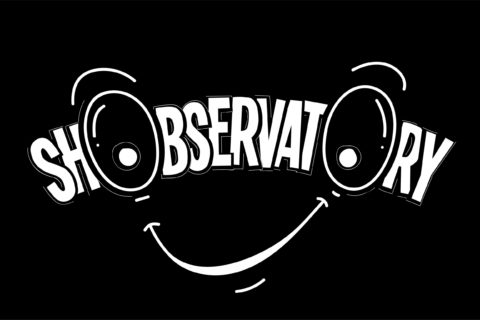When it comes to strategic understanding, data insights aren’t only all the rave, but also the fundamental foundation to building an evidential intelligence for the organisation to follow. Whilst most brands understand data’s value, many are unsure of the various dimensions of value it can deliver across their end-to-end operations.
In the 1960 American Western, The Magnificent Seven, a group of seven gunfighters are hired to protect a small village. The seven share traits, but are all different and work best together, so too, when combined, the “Seven Data Dimensions” can protect and empower your brand.
This series will provide an overview of the magnificent seven datasets that most brands have access to, that can be leveraged to gain insight and understanding to design strategies, develop tactics, deliver experiences and drive innovation. Working with the global mTab network and other industry experts this series will pull out examples, and top tips, where brands are most effectively harvesting and deploying data.
Getting Social
The first data source we explore is social media. Today’s most common social media channels, Facebook, Instagram and Twitter et al, have only emerged during the past c15 years. The Internet has largely been a social interactive tool since its commercialisation in the 1990s. Back then ‘web surfers’ primarily used message boards and real-time chats to discuss specific topics.
As Matt Hay, Chief Executive Officer of Bulbshare explains:
“While social media is one of the younger engagement channels, it’s quickly become one of the most critical for businesses to track. Every individual customer can now broadcast their sentiment and preferences on your brand and products. And while word of mouth was always an important factor in boosting or bashing a business, social media has supercharged everyone’s word of mouth extending the reach and increasing the volume. This is why keeping a solid handle on this data is essential in understanding potential issues, diffusing problems and amplifying opportunities.”
Today, online social interaction has larger audiences, greater personal connections and opinions and discussions on practically any topic under the sun. As Matt explained, social media has empowered consumers as broadcasters. This has allowed them to quickly and ‘loudly’ proclaim their delight and frustration with products and brands.
Growing Complexity
There’s a spectrum of social channels that companies opt to engage markets with. These include but aren’t limited to, LinkedIn, Facebook, Twitter and Instagram, with new additions regularly entering the market. Each of these has a vast array of capabilities for specific, diverse audiences.
Regardless of whether a brand chooses to specialise in some of these social channels, or tries to participate in every platform, there’s a wealth of insight that they can derive. Social media provides ethnographic insight into the behaviours, perceptions, attitudes and preferences of customers, and perspective into their engagements and experiences with the brand.
Social media channels can deliver brutal honesty, and this information can be invaluable to running a business. This is why social listening has come to the forefront of many organisations as a priority to track opinions, reactions and trends, good and bad, surrounding a company. Of the data sources discussed in this series, social media comes closest to a proxy for “observational data” a technique that remains fundamental. As Alex Batchelor, MD UK & Europe of Behaviorally (formerly PRS) wisely comments:
“Observation and ethnographic approaches are also needed and I am not convinced by those who think that the digital environment automatically provides all the data you need. It may be huge in quantity but I am not sure it trumps just watching people”.
Personally, I believe the best approach is to develop solutions that combine both techniques, balancing robust observational research with the speed that social media analysis can bring. One technique doesn’t represent a panacea, it’s about selecting the right approach for the task at hand.
Listen Up
“Social listening has evolved from a marketing initiative to gauge customer sentiment to a key tool in assessing business risks. These can be a single customer issue that can quickly grow if it’s not addressed, or an organized campaign against a brand.”
According to Mark Langsfeld, Chief Executive Officer of mTab.
“And while many businesses tend to view social media as a necessary evil to track, there are also tremendous opportunities in these data streams to understand the needs and wants of your customers and prospects in order to adjust and align your products and services.”
Gathering real-time insight from across the social channels is one thing, but democratising it across the organisation is another. The wealth of information from customers’ social posts can range from billing issues for Finance to resolve, to performance failures for Product Development to address, to increasing excitement for a specific feature for Marketing to communicate. It can even deliver alerts around activist issues related to protests, boycotts or other threats that should go to PR, Communications, Security or even the C-Suite. This is why analysing the information and developing processes to quickly direct it appropriately is critical in using it to effectively preserve, protect, and grow the business.
Social Evolution
Social media is evolving beyond a mere communication and consumption channel; it’s becoming a sales channel too. Beyond this, with censorship and editorial concerns arising, there are emerging social media players that are finding niches to fill.
As Matt explained:
“Social channels are now transforming consumers into sellers. The rise of so-called “social commerce” is transforming passive consumers into brand advocates and evangelists that are often serving as acquisition channels in their own right for brands. Far from social media stagnating under the weight of the monopolies of Twitter, Instagram and Facebook, the industry is reinventing itself with the meteoric rise of audio-first network Clubhouse pointing the way to a new wave of social channels that will give brands fresh opportunities to collaborate with customers and drive value.”
Getting Started
The first step in getting a handle on social data streams is to determine a centralised owner of the sources. Often this lies with the team that manages social media, typically Communications or Marketing. This group should, in turn, engage tracking and listening software solutions to monitor dimensions such as keywords, trends, patterns, influencers and traffic spikes but also closely follow shifts in sentiment and engagement. From here, there should be point owners across every team in the organisation who serve as the conduit for relevant social intelligence and deliver it to the appropriate employees to assess and address the specific issue. It should also include the social media owners to devise and draft responses.
When a move in sentiment or engagement metrics, or similar spikes occurs, in either a positive or negative direction, these individuals should work congruently to quickly determine the scope of the spike, the impact on the company and the response in terms of operation and communication.
Social is just one of these ‘Magnificent Seven’ datasets that can empower your brand. Stay tuned in this series as we continue the review of these dimensions of data to help guide understanding of the holistic health of a brand.
With each data source, the key is to strategically set a plan in order to identify, collect, analyse and democratise the intelligence in the most effective manner possible. There also has to be ownership of decisions in terms of assessment, response and reaction. From there, it becomes a matter of creating a habit of returning to the data to identify and understand shifts and evolutions in order to design strategies, develop tactics, deliver experiences and drive innovation.


